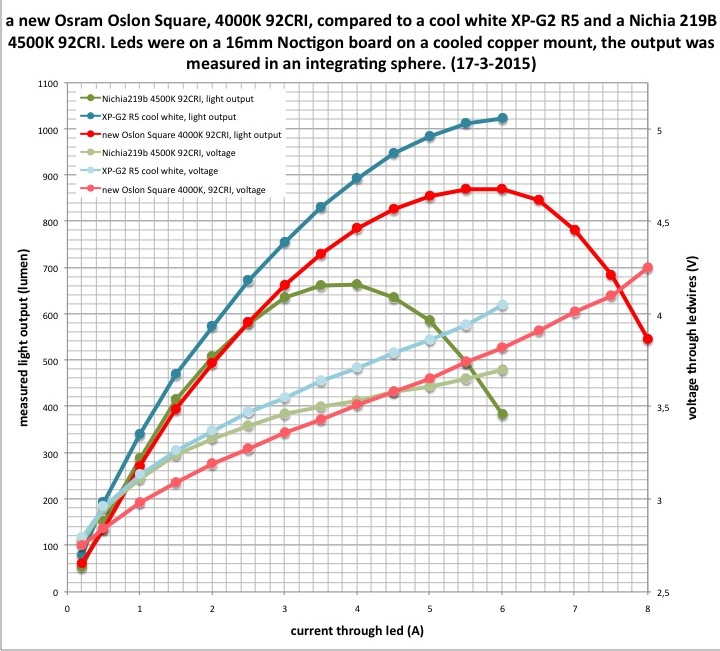My data can provide more than educated guesses, they provide usable data on the led. In other words, it is quite usable to calculate what happens inside a flashlight. Just the lumen calibration is debatable. The educated guess part is what else happens in your flashlight: the light loss inside a flashlight from reflector, lens and temperature sag, the resistances on various places, some variation in led binning.
If you use my emitter switch and spring data combined with HKJ's battery data you know close to what will be the current. In this case: say that you aim for 5A for an old batch XP-G2 (which is very close to maximum output) you can see in my most recent XP-G2 test that the led voltage is 3.7V.

With bypassed springs, wire losses and switch losses taken into account (if done well, it might be no more than 0.15V), the battery must provide 3.85V. Use a high drain cell, like the Keeppower 4200mAh, and at 5A it gives off 4.0V initially, 3.8V after 10 minutes. The actual current in your flashlight will thus be higher than 5A, but at 6A the led voltage is already 4.05V, so there's no cell that will kill it.
%202014/Keeppower%20IMR26650%204200mAh%20(Black)%202014-CapacityTime.png)
If anything is less than ideal, like a lower drain cell, a higher voltage led from a newer Cree batch, or thinner led wires, or a non-copper braided spring (at 5A: steel->0.25V, copper alloy->0.08V) you will not probably be below 5A.